With SEO copywriting, you write for two audiences: users and Google.
Are you curious to know how?
This guide will teach you several strategies you can use to help increase your website’s traffic and ranking.
Contents:
- What Is SEO Copywriting?
- How Can Copywriting Help With SEO?
- SEO Copywriting Best Practices
- Leverage Bucket Brigades
- Use the Inverted Pyramid
- Structure Your Content
- Match Search Intent
- APP: Agree, Promise and Preview
- Use the ASMR Formula
- Cover the Topic In-Depth
- Include Synonyms and LSI Keywords
- Answer Questions People Ask
- Avoid Long Sentences And Misspellings
- Use Rich Media
- Optimize Your Meta Tags
- Gather Original Data
- Include CTAs
- Establish EEAT
What Is SEO Copywriting?
SEO copywriting is creating keyword-optimized content that appeals to users and search engines.
Do you want to know how it works?
According to Backlinko, websites with a longer “time on site” generally rank higher on Google.
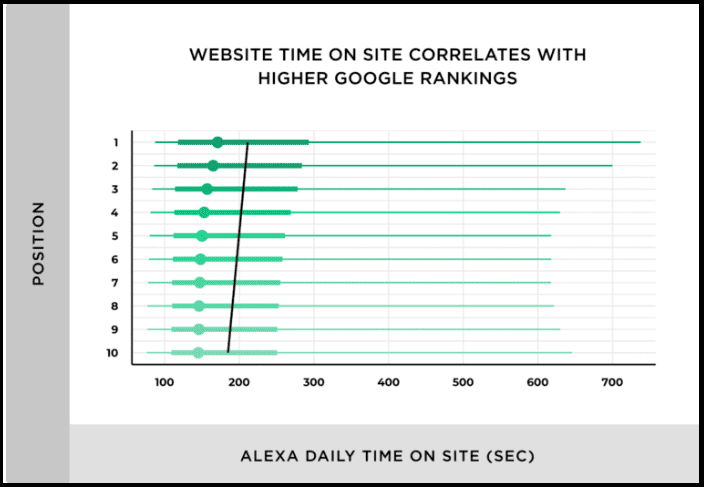
This SEO statistic shows that writing for users is all about creating value.
In other words, your goal should be to build interesting, informative, and useful content for your readers.
Creating content for search engines, on the other hand, is all about optimizing your site for the algorithms.
Of course, this does not mean writing ONLY for Google, because you may end up looking like a robot:


The good news is that you don’t have to choose between writing for users or writing for Google.
With a little effort, you can do both!
How Can Copywriting Help With SEO?
Copywriting can help with SEO in several ways because it:
- Influences Your Website’s Rankings
- Helps You Improve Your Organic CTR
- Makes Your Website More User-Friendly
- Lets You Create Fresh, Unique Content
1. Influences Your Website’s Rankings
Do you know that, on average, the top-ranking pages usually rank in the top 10 results for around 1,000 other relevant keywords?
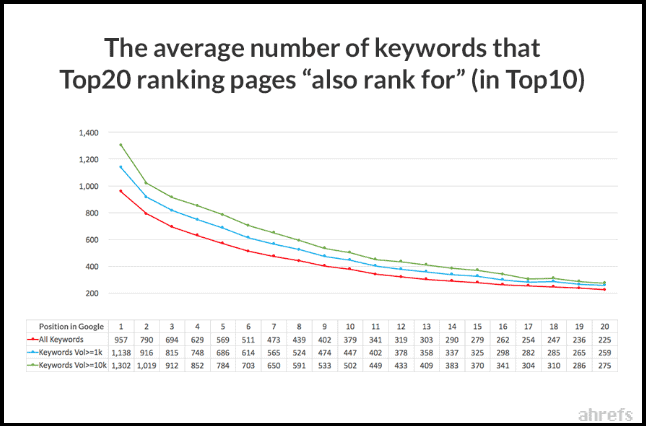
So, if you want to be among those top positions, you need to work on the quality of your content.
And with copywriting, you can influence your website’s online visibility by choosing the right keywords to target.

2. Helps You Improve Your Organic CTR
Second, copywriting can help improve your website’s organic CTR.
Your click-through rate is the percentage of people who see your website in search results and then click on it. A higher score means more traffic for your site.
Do you know how to improve it?
One of the best ways is to write compelling headlines and meta descriptions.
Your headline is the first thing people will see in search results, so make sure it’s interesting and accurate. Your meta description is the short blurb of text that appears beneath your headline.


3. Makes Your Website More User-Friendly
If your website contains pages difficult to navigate or hard to understand, users will probably click away.
On the other hand, a well-written website will keep users engaged and encourage them to explore further.
Google also takes user experience into account when ranking websites. So, by making your site more user-friendly, you’ll also be helping your SEO.
4. Lets You Create Fresh, Unique Content
Creating new content allows you to target new keywords and reach a wider audience.
It also shows Google and users that your site is active and relevant, which will help your rankings in the long run.
SEO Copywriting Best Practices
Now, let’s take a look at some best practices to keep in mind:
- Leverage Bucket Brigades
- Use the Inverted Pyramid
- Structure Your Content
- Match Search Intent
- APP: Agree, Promise, and Preview
- Use the ASMR Formula
- Cover the Topic In-Depth
- Include Synonyms and LSI Keywords
- Answer Questions People Ask
- Avoid Long Sentences And Misspellings
- Use Rich Media
- Optimize Your Meta Tags
- Gather Original Data
- Include CTAs
- Establish EAT
1. Leverage Bucket Brigades
Bucket brigades help keep users engaged with your content.
They work by using a short, attention-grabbing sentence at the beginning of a paragraph to hook the reader, followed by more detailed information.
This strategy keeps people reading because they want to find out more about what you’ve promised them.


- So, here’s the deal:
- You might be wondering:
- And how does that work?
- It gets better/worse:
- Simply put:
- But here’s the kicker:
- Want to know the best part?
- We’re not through yet:
- Here’s the step-by-step process:
2. Use The Inverted Pyramid
The inverted pyramid starts with the most important information and then moves on to less important details.
This is the opposite of traditional writing, which typically starts with an introduction and then gets more detailed as the piece goes on.
It is effective because it helps keep people engaged with your content. By starting with the most important information, you can ensure that people will stick around until the end.
Here’s a visual representation of how it works:
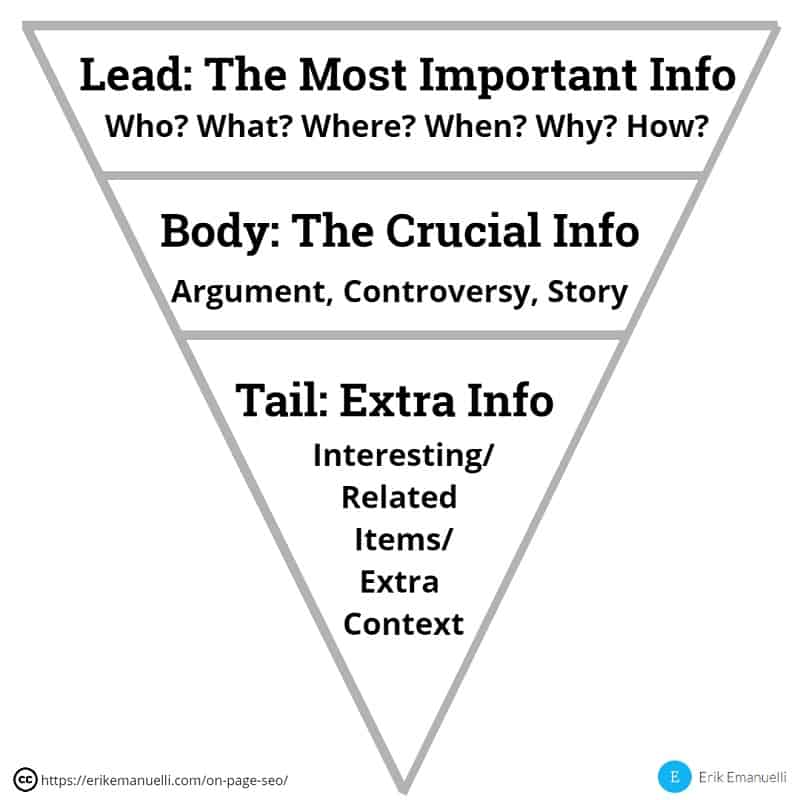
3. Structure Your Content
Your content should be easy to read and understand, with a clear beginning, middle, and end.
Breaking it up into smaller paragraphs and using headlines can also help make it more user-friendly.
Additionally, pay attention to the format.
For example, if you’re writing a blog post, make sure to use proper headings and subheadings (H tags). This will not only make your post easier to read but will also help search engines understand what your post is about.

- Break Each Topic into Subtopics
- Utilize HTML Headings
- Define Concepts
- Summarize
Break Each Topic into Subtopics
This will help you organize your thoughts and make sure that you cover all the bases.
For example, if you’re writing a blog post about “voice search optimization”, some of the subtopics you might want to include are:
- What is voice search?
- The benefits of voice search
- Optimization tips
Utilize HTML Headings
HTML headings are a great way to organize your content and make it easy to read.
There are six different heading tags (H tags), which you can use to structure it:
- Heading
- Subheading
- Minor subheading

Define Concepts
If you’re using any technical terms or jargon in your content, be sure to define them for your reader.
You don’t want to lose people because they don’t understand what you’re talking about.
Summarize
Once you’ve covered all the subtopics, it’s time to summarize everything that you’ve talked about.
This is a great way to help people remember the main points of your content and leave them with a positive impression.
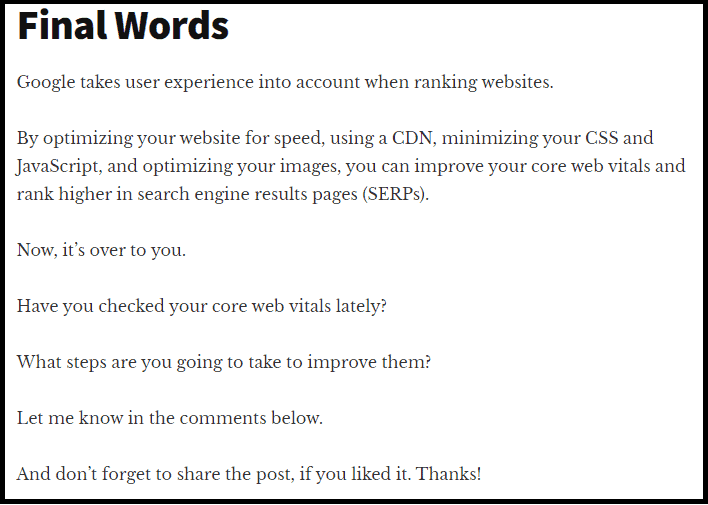
4. Match Search Intent
When someone enters a query into a search engine, they have what’s called “search intent.”

- To learn something (informational)
- To do something (transactional)
- To go somewhere (navigational)
- To buy something (commercial)
As a content creator, you must match the search intent of your audience. If you don’t, you risk driving people away from your content because it’s not what they’re looking for.
For example, let’s say someone is looking for a “pizza recipe.” This is an informational query, so they’re likely looking for a blog post or article that will teach them how to make pizza at home.
If you’re writing an SEO-friendly blog, you would want to include a recipe as well as tips on how to make the perfect pizza. However, if you’re writing about Italian cuisine, you would want to take a semantic approach and focus on topics like the history of pizza or the different types that are popular in Italy.
By understanding search intent, you can ensure that your content is relevant and useful to your audience, which will help keep them engaged.
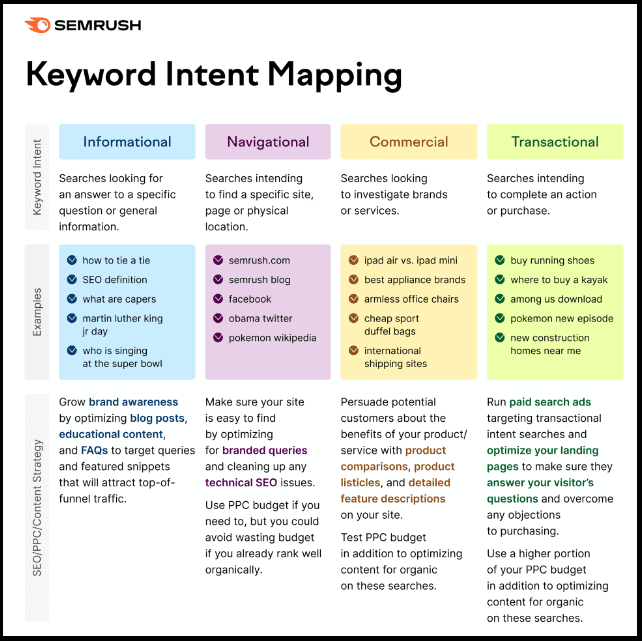
Here are some additional examples of common queries and their corresponding search intent:
- “How to change a tire” – Informational – (to learn how to do something)
- “Pizza near me” – Navigational – (to go somewhere)
- “Buy new tires” – Commercial – (to buy something)
5. APP: Agree, Promise, and Preview
The APP method is a copywriting technique that can be used to grab attention, build interest, and create desire.
It works like this:
- Agree with the reader – First, you need to agree with the reader on something that they’re thinking or feeling. This helps to establish rapport and builds trust.
- Promise the reader something – Next, you want to promise the reader that you can help them with their problem or meet their need.
- Preview the content – Finally, you should give the reader a preview of what they can expect. This helps to generate interest and creates a desire to read more.
For example, let’s say you’re writing a blog post about “rich snippets”.

You might use the APP method like this:
- Agree: “Rich snippets can be difficult to obtain, especially if you’re not sure how to optimize your content.”
- Promise: “But don’t worry, I’m here to help. In this blog post, I’ll share my top tips that will help you write content that will earn rich snippets on search engines.”
- Preview: “Some of the tips I’ll be covering include utilizing structured data and validating the markup.”

6. Use the ASMR Formula
The ASMR formula is a writing technique that can be used to craft persuasive headlines and blog titles.
It works like this:
- A – Adjective
- S – Superlative
- M – Modifier
- R – Reason
For example, let’s say you’re writing a blog post about “SEO metrics“.
You might use the ASMR formula like this:
The Most Comprehensive Guide to SEO Metrics
- A – Adjective – Most
- S – Superlative – Comprehensive
- M – Modifier – Guide
- R – Reason- SEO Metrics

7. Cover the Topic In-Depth
When it comes to building valued content for users, one of the most important things you can do is to cover the subject in-depth.
This means researching and including a variety of subtopics and related terms.
For example, let’s say you’re writing a blog post about blogger outreach techniques.
To cover the topic in-depth, you might want to include sections like these:
- What is blogger outreach?
- Why is it important?
- How can you do it effectively?
- What are some common mistakes to avoid?
8. Include Synonyms and LSI Keywords
LSI keywords are related terms that search engines use to determine the meaning of a piece of content.
For example, if you’re writing about “link-building tips”, some related words you might want to include are “link-building strategies”, “link-building tactics”, and “how to earn links”.
Adding synonyms is also a great way to improve readability.
For example, if you’re writing about “SERP features” you might want to include terms like “search engine results pages” and “SERP listings”.
9. Answer Questions People Ask
Another thing you can do is to answer questions people ask. This can be done by including a “Questions” section in your blog post or by creating a separate FAQ page on your website.
Not only will this help you rank for long-tail keywords, but it will also make your content more helpful and informative for your readers.
For example, let’s say you’re writing a blog post about “orphan pages“.
Some questions you might want to answer are:
- What is an orphan page?
- Why are orphan pages bad for SEO?
- How can you find and fix orphan pages on your website?

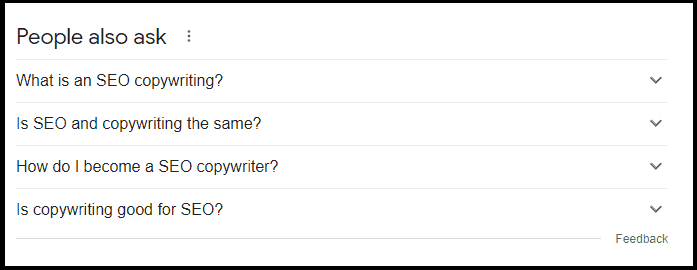
10. Avoid Long Sentences And Misspellings
It’s important to avoid long sentences and misspellings. Otherwise, your writing can be hard to read and understand.
Instead, try to keep your sentences short and sweet, and proofread your content carefully before publishing it.


11. Use Rich Media
Adding rich media is a great way to make your content more digestible. This includes things like images, infographics, videos, and audio files.
By including them, you can make it more engaging and visually appealing.
It will probably help you improve your rankings by increasing the time on site of your website and reducing your bounce rate. This is because visitors love websites that include images and videos, which help improve the user experience.
12. Optimize Your Meta Tags
Meta tags are a crucial part of SEO. They include your title tag and meta description.
Your title tag is the most important meta tag because it’s what people see when they search on Google.
It should include your target keyword and be under 60 characters.

Your meta description is the second most important meta tag because it’s what appears underneath your title in the search results.
It should be under 160 characters.
Although not technically a meta tag, your alt text is another important thing to take care of.
Just remember to include your target keyword, make it natural, and try to be under 125 characters.

13. Gather Original Data
Gathering original data means conducting your survey or study and publishing the results in your blog post.
Not only will this make your content more informative, but it will also help you rank higher in search engines.
This is because people will probably link your statistics with the origin of the data.
To do this, you can use tools like Google Forms or Jotform Survey Maker to create your survey and submit it to your audience.

14. Include CTAs
CTAs encourage people to take action, such as signing up for your email list or downloading your e-book.
By including it in your content, you can increase your conversion rate and get more people to complete what you want.
For example, you can add one at the end of your blog post that invites people to sign up for your email list. Or you can include it in your sidebar that encourages people to download your e-book.
15. Establish EEAT
EEAT stands for Experience, Expertise, Authoritativeness, and Trustworthiness. It is a term that was coined by Google to describe the factors the evaluators take into account when ranking websites.
To write content that ranks better in search engines, you need to establish EEAT. You can do this by crafting informative and well-researched content.
You can also offer interviews, participate in forums and online communities, and answer questions about topics where you feel expertise.
In addition, you can also improve your EEAT by including testimonials, reviews, and case studies. This will help show Google that your content is authoritative and trustworthy.
Finally, it will also help get quality mentions and links to your website.

Before You Go
By following these copywriting strategies, you can build content that both Google and your audience will love!
But it does not end here. There’s much more you can do.
You may want to read these guides:
Now, it’s over to you.
Which one of the strategies mentioned do you like more?
Let me know in the comments below!

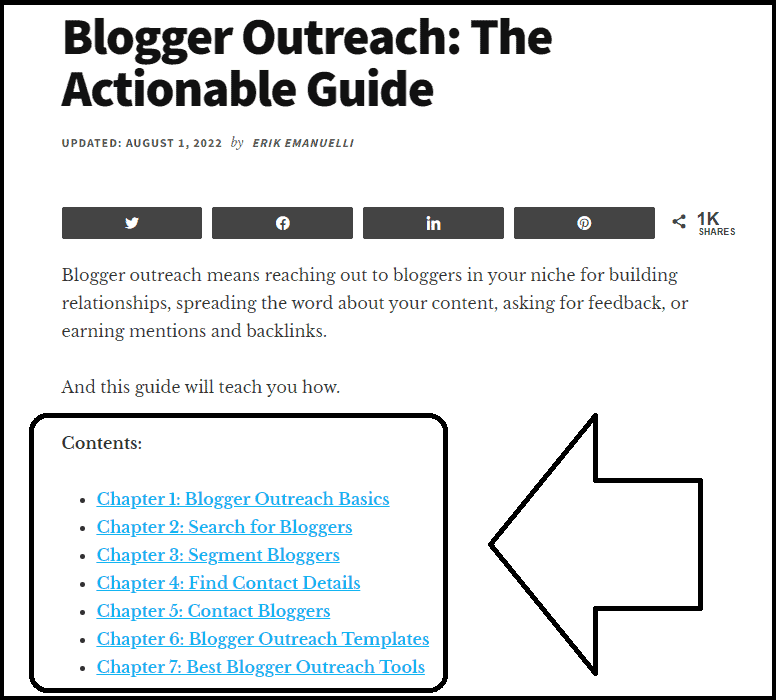

Hello Erik,
SEO plays an important role in ranking a website in search engines and driving targeted traffic. Writing SEO-friendly content is very important and hence SEO copywriting plays an important role. You have shared very helpful points for Good SEO-optimized Content.
Regards,
Vishwajeet Kumar
That’s right, Vishwajeet.
It may take time to master SEO copywriting, but when you start seeing results, it’s sweet! 🙂
Thanks for reading and commenting.
Great post. One of the things you mention that I see often is site owners neglecting the structure of their content. It’s so important, and it’s too often overlooked
Hi Anthony,
that’s right.
And here’s more about the site structure topic:
https://erikemanuelli.com/website-architecture/
Hi Erik,
Some great tips here on copywriting. It’s good you mentioned EAT because so many don’t do that. Thanks for sharing more great content.
Hi Barrie,
this one needs to be updated because since December 2022, it’s E-E-A-T:
https://erikemanuelli.com/google-e-e-a-t/